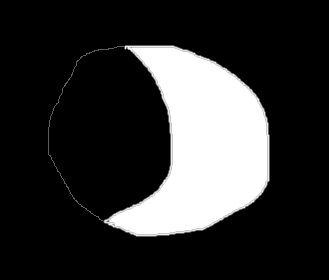Some days ago, about 1 ~ 1.5 hours after the sunset I could see a very bright half moon, and the interesting part is, I think I could see the edge of the dark half of the moon, i.e. a whole circle, but with very little contrast to the surrounding black space. It was very weak.
I'll use my impressive graphic design skills to try to explain it better:
The line I'm talking about is that grey one on the left, closing the moon.
My hypotheses are:
- My brain made it up, as if it was trying to "close the circle"
- The earth was lighting the moon up, as in: light from the sun was hitting the earth and being re-emitted to the moon (as a very bright moon can actually provide you enough light to see in the dark).
Thanks!

